Northgate - M3PP / Assure
The integration allows Worksheets and Assets to be created, and Asset Attributes to be updated in M3PP/Assure, using data from Jadu Connect cases. At the point that a Worksheet or Asset is created, information from the Worksheet or Asset can also be pulled back and stored in fields on the associated Jadu Connect case.
The integration requires Jadu Hub Integration Server (HUBis). Please contact us for more information.
Currently, the integration has only been tested against version 2.9.3.6 of Northgate M3PP Web Services.
Limitations
- Currently only one-way integration is possible; updates made to the Worksheet directly in M3 would not be pushed back to Jadu Connect.
General settings
On the General tab you can enable / disable the integration with M3PP/Assure, and configure its settings.
When you save the settings, with the integration enabled, Jadu Connect will attempt to connect to M3PP/Assure in order to verify the settings.
If the connection fails, the settings will not be saved, and an error message detailing the reason for the failed connection will be displayed.

- Worksheet external reference field - this name of the field on the Worksheet in which the Jadu Connect case reference should be stored.
Valid values for these settings will have been configured when the integration was initially set up in HUBis so may not need to be changed when enabling the integration.
References
A Reference is a special type of field used to store a Worksheet reference number or Asset key, against a case. When creating a mapping template, the Reference to which the template applies must be selected. Note: when dealing with multiple worksheets or assets, or a combination of the two on a single case type, a Reference should be set up for each.

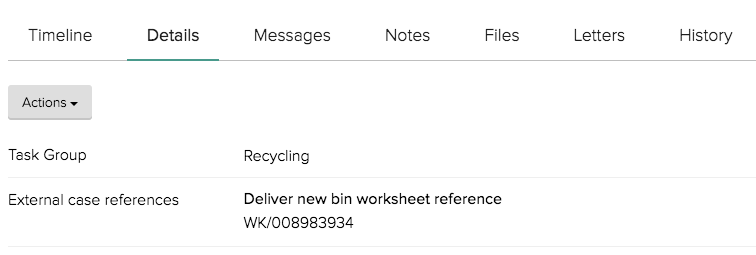
Mapping templates
A Mapping template is a set of mappings which define the data to be passed between Jadu Connect and M3PP/Assure when creating Worksheets and updating Asset Attributes.
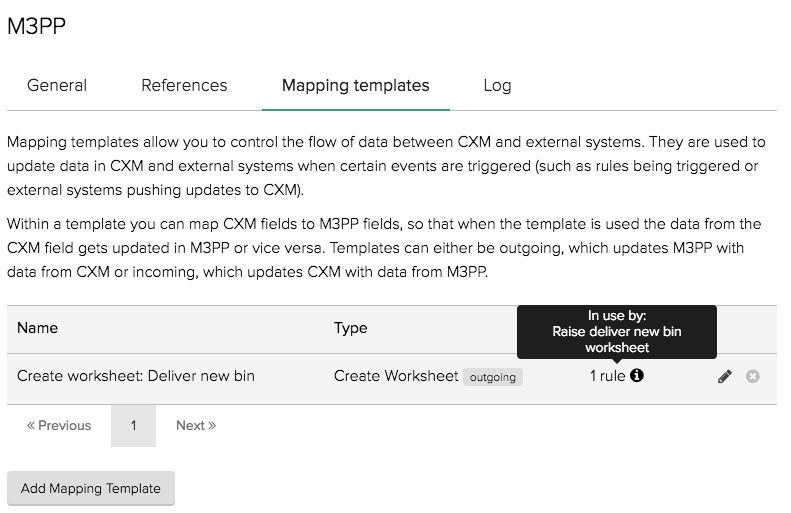
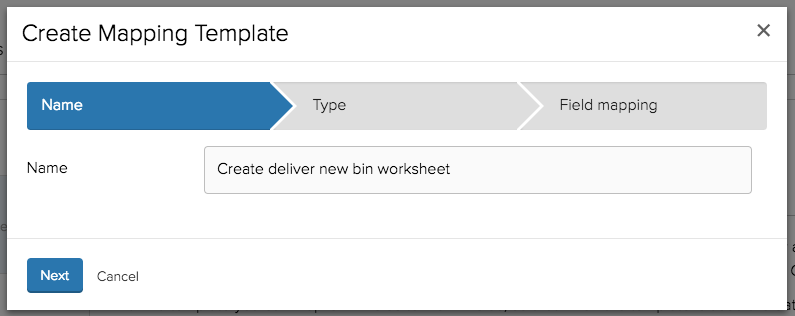
After giving your mapping template a name, you must select the type. There are 6 types of mapping template that can be created:
- Create an Asset (outgoing) - defines the fields to be populated when creating an Asset.
- Create Worksheet (outgoing) - defines the fields to be populated when creating a Worksheet.
- Update a single Attribute for all Assets of a particular type, for a Property (outgoing) - defines which attribute should be updated on which asset type, the value that should be given to this attribute, and the property for which it should be updated.
- Update a single Attribute for one or more Assets (outgoing) - defines which attribute should be updated on which assets (identified by a comma separated list of asset keys), and the value that should be given to this attribute.
- Asset (incoming) - defines the Asset data which should be pulled back from M3PP/Assure and stored on the Jadu Connect case, following a Create an Asset action.
- Worksheet (incoming) - defines the Worksheet data which should be pulled back from M3PP/Assure and stored on the Jadu Connect case, following a Create Worksheet action.
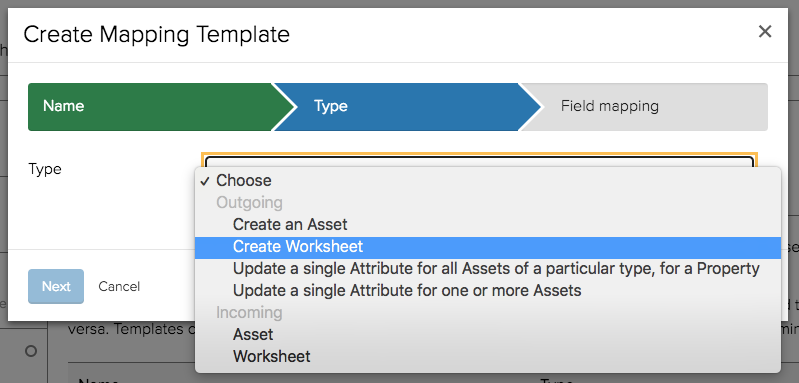
Finally you must complete the mappings. The requirements for these differ slightly, depending on whether your mapping template relates to worksheets or assets.
Mapping templates: Create an Asset
In the first row of the mappings you must select which Reference the template applies to. For Create an Asset templates, this means that the Asset Key for the new Asset will be stored in this Reference. For Asset (incoming) templates, this means that the template would be applied following a Create an Asset action that is linked to this Reference.
The subsequent rows are field mappings. In order to create an Asset in M3PP/Assure, there are several mandatory mappings: Asset Type, Section, and one of UPRN, Asset UKey, or Site Key. In order to set Attributes on the Asset, click the Add Another button, and choose Attribute, from the dropdown field in the right hand column of the row that was added. You'll notice that a text field appears below the dropdown field, and in this the Attribute Code should be entered. In the left hand column of this row, choose the relevant Jadu Connect case data that holds the attribute value. Repeat for each Attribute that needs to be set on the Asset.
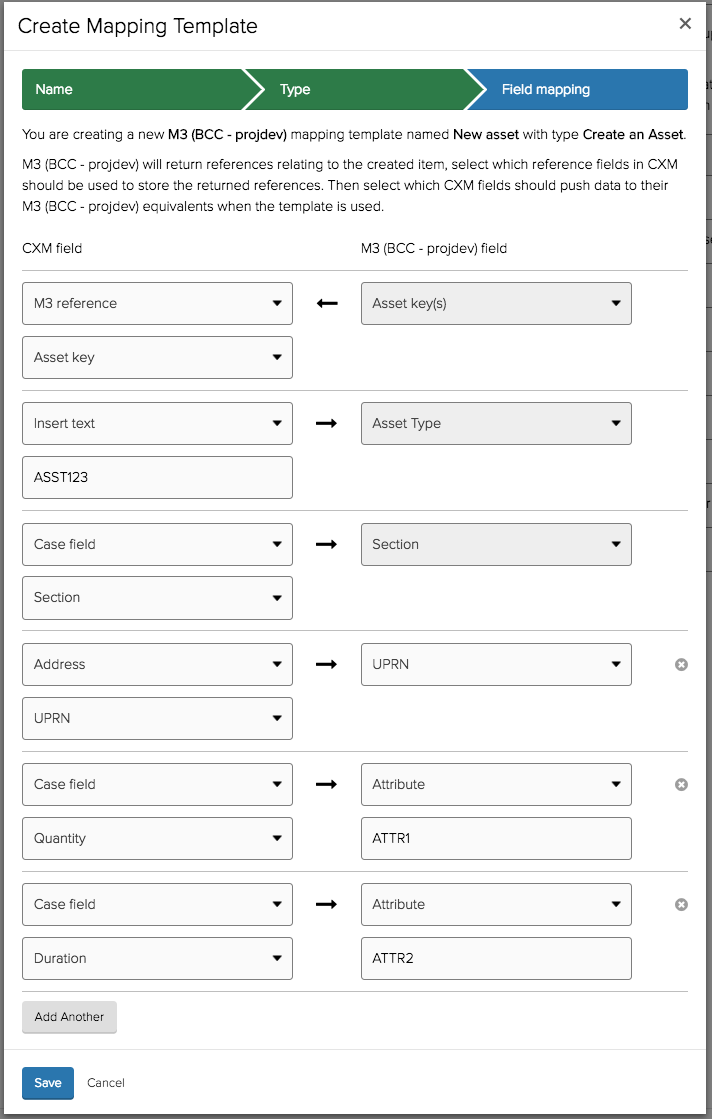
Mapping templates: Worksheets
In the first row of the mappings you must select which Reference the template applies to. For Create Worksheet templates, this means that the reference number for the new Worksheet will be stored in this Reference. For Worksheet (incoming) templates, this means that the template would be applied following a Create Worksheet action that is linked to this Reference.
The subsequent rows are field mappings. In order to raise a Worksheet in M3PP/Assure, there are several mandatory mappings: Subject UPRN, Department code, Application code, Task Group code, Task code, Date and time received. You can then add as many additional mappings as you wish by clicking the Add Another button.

Mapping templates: Updating Asset Attributes
Mapping templates for updating Asset Attributes do not require References to be mapped and all field mappings are mandatory.
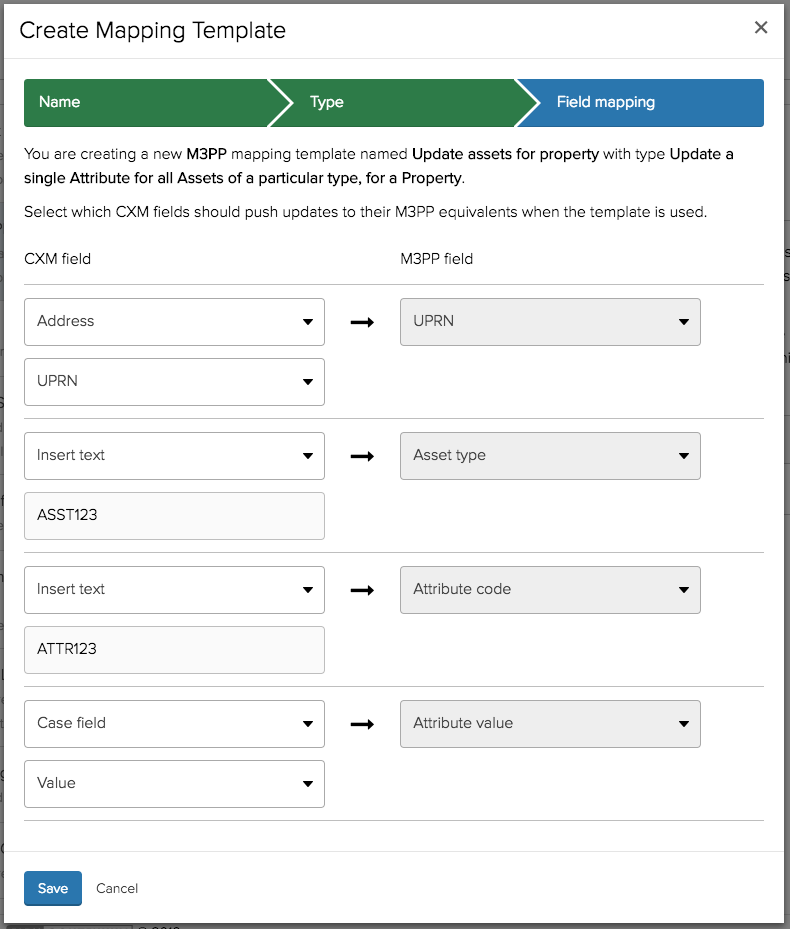
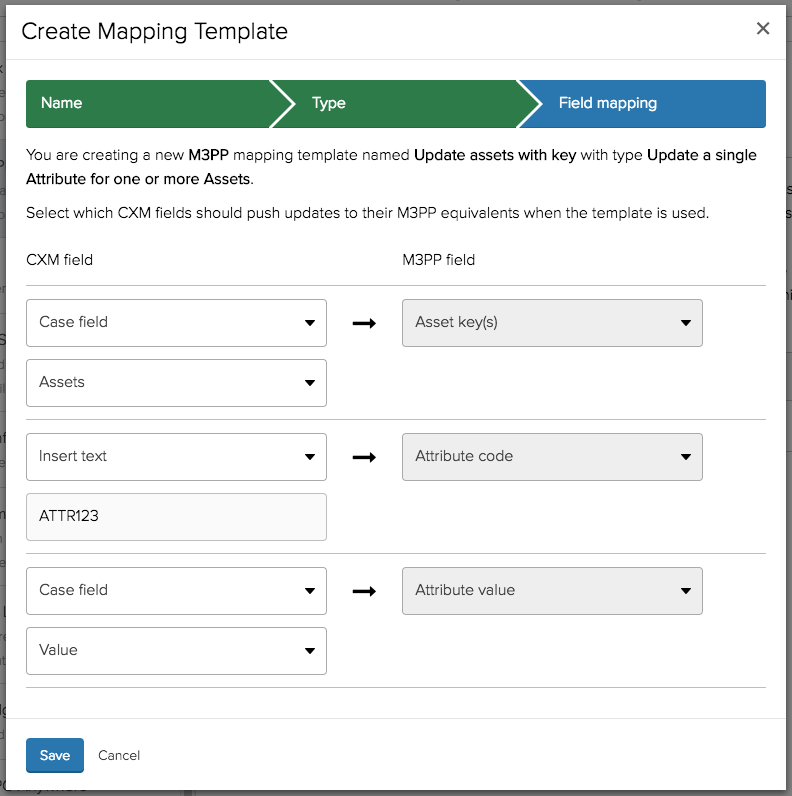
The following types of data can be used from the Jadu Connect case in field mappings:
- Case field values
- Case dates
- Linked Person details
- Linked Address details
You can also configure a manual text mapping, if the value of the field should be the same each time that mapping template is used.
You should not rely on the integration to ensure that data is removed from the Jadu Connect case or M3PP/Assure Worksheet or Asset(s) automatically when clearing down personal data in either system. The specific tools provided in each system should be used directly to ensure that no personal data is left unnecessarily.
Outgoing mapping templates are applied via rules, using the Apply integration action.
Worksheet incoming mapping templates are applied as a result of a Create Worksheet mapping template being applied, and Asset incoming mapping templates are applied as a result of the Create an Asset mapping template being applied. All incoming mapping templates for the applicable Reference will be applied.

Since integrations are run as background tasks and will be retried in the case of any connectivity failure, it is likely that any subsequent rule actions (e.g. sending an email) will be performed before the Worksheet has been created, or the Asset(s) created / updated. This should therefore be accounted for when designing workflows.
Log
The integration log provides a summary of case integration actions that have occurred; including where worksheets / assets have been successfully created or updated, and where worksheets or assets have failed to be created, or assets have failed to be updated (including the reason for the failure, if known). The log also details any validation failures when creating or updating the Worksheet or Asset(s), or when updating the case with values from the Worksheet or Asset. Reviewing the integration log can help to identify incorrect mappings, or areas where validation during data capture is insufficient.
Where an action has failed due to a connection issue or other intermittent error, it will be retried up to a maximum of fifteen times. If integration has failed due to a validation error (e.g. due to an invalid mapping value), it will not be retried.
